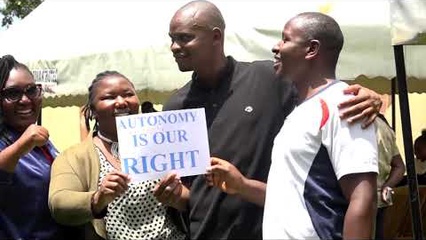By Diperius Wanyonyi
From 1963 to mid-1980s, the Kenyan government placed a high premium on higher Education. Universities were centers of excellence where the top cream of the nation schooled.
Funding was adequately done and beneficiaries talk about it with nostalgia. However, from the late 1980s, standards in the Kenyan universities have been on the negative trajectory.
Prof Nyaigotti-Chacha, in his article Declaration on the Africa University in Third Millennium asserts that, higher education system in Africa has suffered neglect because of scarce resources in most countries and low priority given to it by African states Kenya included.
He further notes that, African higher education has suffered from understaffing, underfunding, declining academic research and poor working condition for staff. However, the government of Kenya through its political agents has perfected a fallacy that the universities are to blame for poor quality degrees.
Since independence, university enrolment has significantly increased from about 500 in 1964 to 537,689 in 2017 (Kenya National Bureau of statistics, 2018). Mbiriti (2013) –Quality in Kenya’s Higher Education Institutions observes that quantitative leaps in the number of universities in Kenya coupled with similar trends in student enrolment have given rise to concern for quality given that upgrading of resources has not matched the rate of enrolment growth.
It is an illusion to believe that increase in the number of universities and constituent colleges in the recent past equals quality higher education.
During the Kibaki era the number of universities increased; almost every county aspired to have its own university. Newly established universities struggled to put up some physical infrastructure mostly lecture halls; even some hired buildings to serve as classes.
The issue of physical infrastructure including taking over colleges and schools to establish universities became a success story but the main challenge that universities grapple with to date is shortage of qualified academic staff.
Reduced government funding led to newly established universities to rely on part-time lecturers while old universities, the big six (University of Nairobi, , Moi University, Kenyatta University, Egerton University, Jomo-Kenyatta University and Maseno University) strained the existing staff.
Due to the shortage of lecturers, newly created universities have mastered the art of enticing lecturers from the big six universities to teach on part-time basis.
This has created a situation where lecturers uncontrollably hop from one university to the next teaching over 9 units per week an equivalence of between 27-36 hours. According to regulations, university dons are supposed to teach a load of 3 units per week so that the remaining time they engage in research, innovation and publication.
Universities are supposed to be factories of knowledge for sustainable growth and development of a given nation.
In the years of early 2000 and before, each university academic cadre had a clear mandate.
I remember during my undergraduate studies at Kenyatta University, academic giants such as, Prof. S. Bogonko, Prof E.M. Aseka, Prof N. Sifuna, Dr P. Kakai, Dr E. Kisiang’ani, Prof E. Otiende, Prof. K. Wambari among others would teach a huge number of students numbering between 400-1000.
Education units and Common University Units attracted over 1000 students.
These academic gurus would inspire us with theories and paradigms in heavy doses one hour per week, the remaining 2-3 hours were meant for Tutorial groups of about 40 where tutorial fellows would define and explain what the professors meant.
Tutorial fellows played a pivotal role because they simplified everything and guided us in some practical aspects such as basic research methods and writing. This arrangement allowed senior lecturers and professors’ time to supervise post-graduate students pursuing Masters and Doctorates.
In conclusion, quality degrees can be realized through a number of bold pragmatic decisions. To start with, the Kenyan government should fund higher education the way they do at primary and secondary schools.
The 100 per cent transition policy from primary school to secondary will eventually balloon the numbers at the universities.
Secondly, the number of lecturers should be increased to ensure tutorial classes are re-introduced.
My final opinion is that, universities should stop misusing part-time lecturers by engaging them without pay and demand funds from the government to employ more teaching staff.
The author is a researcher and a Ph.D candidate at Moi University, Department of History, Political Science and Public administration.






